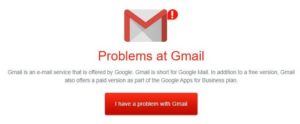Newsletter Archives
-
How to add all types of accounts in Windows 11
WINDOWS 11

By Lance Whitney
Need to juggle more than one account in Windows? Here’s how I do it.
I use a Microsoft account to sign in to my main Windows 11 PC. But that’s not the only account I’ve set up on the computer. I also have a domain account that I use for work, accounts for email and calendar appointments, an account for an old email forwarding service, and an account for my wife to sign in. That sounds like a lot to juggle. But after the initial setup, I can access all these accounts throughout Windows.
Maybe you also need to work with multiple accounts in Windows 11. You might have a local account, a Microsoft account, a work or school account, accounts for specific apps, and accounts for other family members. Whatever types of accounts you use, you’re able to add them to Windows — all from the same place.
Read the full story in our Plus Newsletter (21.46.0, 2024-11-11).
-
All the places a “missing” email can be hiding
MICROSOFT 365

By Peter Deegan
If an email hasn’t arrived, there are many reasons why it’s not sitting in your Inbox. Before complaining to the sender, save yourself embarrassment by checking the many other hiding places.
Over 20-plus years, I’ve had a lot of experience from both sides of a missing email. I’ve traced missing emails sent to me and helped people trace messages that my site, Office-Watch.com, sent to them.
Read the full story in our Plus Newsletter (21.09.0, 2024-02-26).
This story also appears in our public Newsletter. -
How to safely migrate to a Microsoft 365 mailbox
MICROSOFT 365

By Peter Deegan
There’s an official way to migrate mailboxes to Microsoft 365 mailboxes (including Outlook.com) — but there’s a better, more prudent method I’ll explain in this article.
Most of Microsoft’s advice is for medium and large organizations, but there’s a more direct option for smaller orgs, families, or individuals — and it also leaves you with an offline backup.
I’ll focus on moving a free Gmail account to Outlook.com. You can use a very similar process to move small numbers of paid Google Workspace accounts to Microsoft 365 Business, or to migrate any mailbox, such as ISP-based email.
Read the full story in our Plus Newsletter (19.45.0, 2022-11-07).
-
How to use your Gmail account for more than just Gmail

ISSUE 19.42 • 2022-10-17 SOFTWARE

By Lance Whitney
With the Gmail website or app, you can add access to non-Gmail accounts.
Those of you who have a Gmail account likely use the Gmail website or app to view and work with your Google email. But both the site and the app are more versatile than you may think. With either one, you’re able to add a non-Gmail account, such as one for Outlook or Yahoo. Here’s how this plays out.
Read the full story in our Plus Newsletter (19.42.0, 2022-10-17).
This story also appears in our public Newsletter. -
I have Outlook and can no longer connect to Gmail
If you are seeing this you aren’t alone. Gmail made a security change and clearly didn’t communicate well about it.
I’m reposting a solution posted by Roger in the forums on the main page so that others can see it: It should work on other versions of Outlook as well.
Topic: How to use MS Outlook 2003 to access a Gmail account with 2-Step Verification @ AskWoody
How to use MS Outlook 2003 to access a Gmail account with 2-Step Verification
For many years, my wife and I have used MS Outlook 2003 to access our Gmail accounts. Because MS Outlook 2003 has some security issues, Google has for years required the “Access to less secure apps” option to be turned on in order to use Outlook 2003 with a Gmail account. However, Google has announced that this option will be removed at the end of May, 2022. At that time, Google says it will require 2-Step Verification (Two factor Authorization) on all Gmail accounts.
However, Outlook 2003 doesn’t work with 2-Step Verification (later versions of Outlook do, I think). Therefore, it is necessary to use an “App Password” generated by Google instead of the usual Outlook password. After a day and a half of effort, I have learned how to do that. I summarize below what worked for me because I have not seen it documented elsewhere.
First, turn “2-Step Verification” on in your gmail account and make sure it works. For me, this required at least two automated phone calls from Google to verify my identity. After that, I could access my gmail account with the gmail app with no problems.
Then select the “Security” tab on your Google Account, then look for “Signing in to Google”, and select “App Passwords”. Google asks for type of computer (Windows PC for me) and program (“Outlook” is NOT an option and “Mail” does not work; instead Select “Other” and then type “Outlook”) Google then creates and displays a 16 character alphabetic password. Write down this password.
Return to Outlook 2003, and try to access your gmail account. I got a pop up screen asking for my password, then entered the 16 character Google “App” password, and everything worked !! I had to save the Google Password within Outlook, and enter it “blindly” since Outlook 2003 does not have an option to display the password as it is entered. I had to enter this password a couple of times because I forgot to save it. But now, I can send/receive emails to/from my gmail account, and also use the Outlook 2003 “Test Account Settings” option with no problems.
We continue to use Outlook 2003 because it works and is sufficient for our needs, but is obviously a very old program.
Susan note on 6/10: While I’d LOVE for you to get on a supported platform I’m also a bit of a realist. Also I know that many times you need to get into your email asap and then you’ll deal with upgrading later. Note that you may see this on other platforms as well as your newer versions of email may have been set up with older auth technology.
I’ve also found that some email (uh like my vintage pacbell.net account that has no ability to set an app password) can’t be used on Outlook but can be used on Windows 10 mail app. You may have to move to another email app to get a comfortable email flow again. Don’t get stuck on Outlook forever. Try such mail platforms as em.
-
No Chrome? Easily add full-function Gmail to Edge!
LANGALIST

By Fred Langa
Setup takes all of about 60 seconds, and there’s absolutely zero old-school POP or IMAP mail-server arcana to figure out.
With literally a couple of clicks, you can add a permanent, utterly standard Gmail instance to Edge — or just about any other browser!
Plus: Why some restarts during an update are OK, but others are destructive; and we note a milestone as the IBM PC turns 40!
Read the full story in the AskWoody Plus Newsletter 18.31.0 (2021-08-16).
-
Gmail – it’s not you, it’s them
2020 is not a good year for technology…

Gmail is not having a good day.
-
Which is better, Outlook or G Suite?
Preston Gralla has a detailed comparison of Outlook and Gmail-Calendar-Contacts in Computerworld.
He digs into many nooks and crannies and comes to the conclusion:
If simplicity is your goal, choose Gmail. If, on the other hand, you and your team need every bell and whistle possible, you’ll want Outlook.
Which certainly matches my expectations.
I used Outlook from the very beginning – wrote books about Outlook 97, 98, 2000, 2003, 2007 – and finally gave up on using the big O during the days of Outlook 2007. I moved to Gmail, Google Calendar and Contacts around then, and haven’t looked back. I’m a simple kind of guy, of course.
Have you used both? (I mean, really used them?) What do you think?


